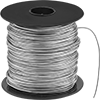Filter by
Diameter
AWS Material Code
Shape
Welding Process
Export Control Classification Number (ECCN)
DFARS Specialty Metals
Tensile Strength
System of Measurement
Flexibility
Solder Type
Wire Construction
Fastening and Joining
Raw Materials
Material Handling






























